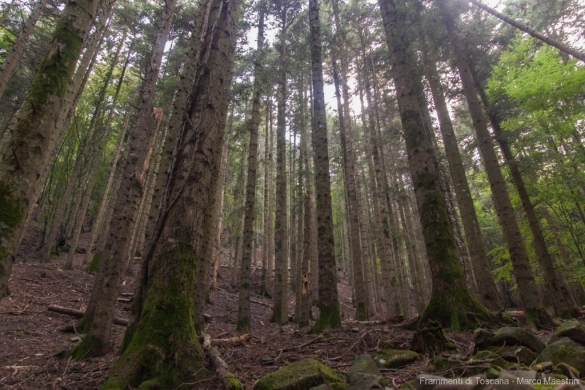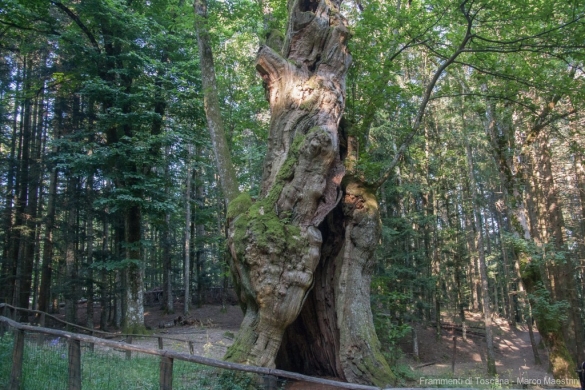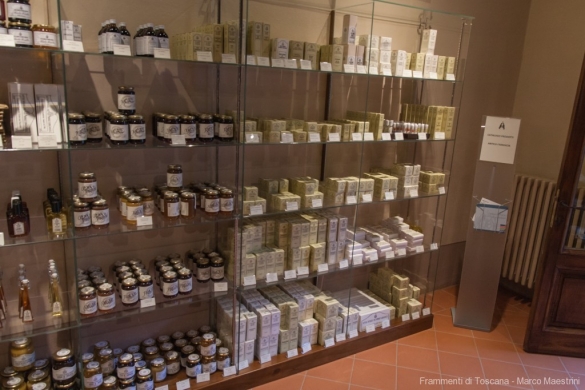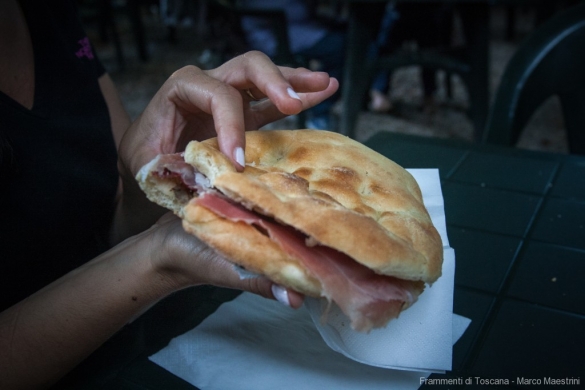Tuscany commonly means smooth hills, medieval hamlets and towns, Renaissance, artistic masterpieces, cellars of superb wine, fields of sunflowers and vineyards. Of course, but there is also another Tuscany, where trees are tall, waters limpid and fresh, thick woods are the natural habitat for wolves, foxes, deer, eagles and hawks, and for centuries man has been able to coexist with the natural environment and to enrich it with churches, castles, villages and monasteries. This off the beaten path Tuscany is in the northeasternmost part of the region, in the district of Casentino at the border with Emilia Romagna, and hosts the Foreste Casentinesi National Park.
The Park area extends across the provinces of Arezzo and Florence in Tuscany, and that of Forlì-Cesena in Emilia Romagna, and is a magic place to be visited and admired in all the seasons of the year: in Spring when the green of woods is bright and intense, in Summer, to escape the hot temperatures under the fresh shadow of its thick forest, in Autumn to be fascinated by all the colours and shades of the foliage, and in Winter, when the landscape is covered of snow.
Every weekend and, especially in Summertime, also during the week, visitors can take part in a vast sort of excursions through the forests: obviously on foot, but also by horse, donkey, bicycle and bus, to discover this green zone of Tuscany under a naturalistic, cultural and historical point of views. Unfortunately the programme of guided excursions uploaded on the park website is only in Italian, however, if you have some command of our language you can read it by clicking here. Of course the park can be visited also autonomously, a good map and a stop in one of the visitors centres located in Badia Prataglia, Camaldoli, Stial Chiusi della Verna and Serravalle to get some leaflets and further info will be sufficient to plan your excursions. Consider that most visitor centres are open in Spring and Summer only, while the one of Badia Prataglia is open all the year round.
The paths around the Monastery and the Holy Hermitage (Eremo)
We have visited the park several times. In Winter we took part in an unforgettable excursion on snowshoes, and in Summertime we made many hiking excursions through the wonderful landscape of its mountains. Recently we visited the Monastery of Camaldoli and we took part in a simple but very interesting guided excursion on a track around the monastic complex. Our guide explained in a very extended, interesting and extremely competent way the plants and traces of animals that we came across along our walk, taught us to recognize the different trees by observing their bark, and told us the history of the park, the Monastery and the Holy Hermitage, the latter founded in 1012 by Saint Romuald, a Ravenna-born monk who found in the forests of Casentino the quiet and silence he looked for to conduct his life, totally devoted to prayer and religious contemplation.
Romualdo founded the Order of the Camaldoli Monks , part of the Benedectine order, who modelled their Rule on the conservation and management of the forests and the Holy Hermitage, while the Monastery was built in the 16th century. The Hermitage is 1000 metres above sea level and can be reached following the specific indications and path through the forest.
Around the Monastery, paths go across woods of ash, beech, oak, maple, fir and cherry-trees, and near the sacred building it is possible to reach a magnificent 400-year-chestnut tree.
The 400-year-old chestnut tree
After the walk, you can’t miss the opportunity to buy the specialities of the old pharmacy of the Monastery, where the monks prepared medicinal herbs. Today, soaps, jams and marmalades, delicious chocolate, essential oils and other beauty products are sold. All products are made following the Monks’ ancient original recipes.
The Old Pharmacy
And to end our day in the more gourmand way…a mouth watering shiacciata (Tuscan focaccia) with mushrooms and pecorino cheese, to nourish our stomach as we did with our eyes and souls.
Delicious schiacciata










